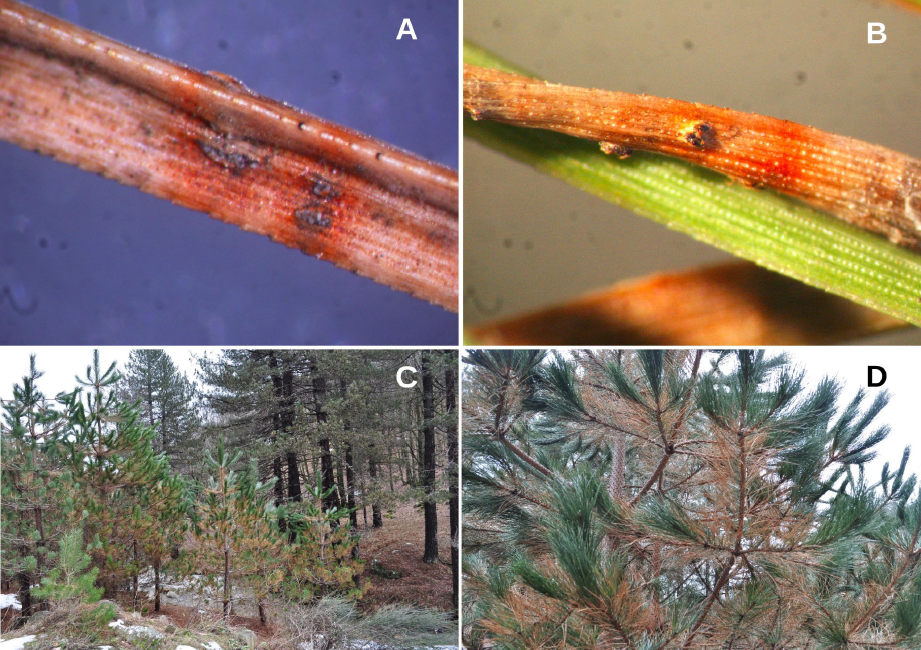holistic management of emerging forest pests and diseases
Researchers find pathogen Dothristroma septosporum in protected pine forests in Italy
A research article recently published in the Management of Biological Invasions journal ascertains the presence of the pathogen Dothistroma septosporum at several sites in Italy. The paper called "Dothistroma Needle Blight in protected pine forests in Italy" presents evidence that in Italy D. septosporum currently has a much larger distribution than previously reported, comprising several forest sites both in the South and in the North-East of the country.
Authors of the article, among whom HOMED researchers, detect the pathogen by using species specific PCR assays and fungal isolation of DNB fungi from native pine species in the investigated areas. By testing different species of trees from the Pinus genus (Pinus nigra subsp. laricio, Pinus cembra, Pinus mugo). D. septosporum was ascertained, while Dothistroma pini - the morphologically identical species causing the same disease, was not detected.

Details of symptomatic needles bearing D. septosporum conidiomata (A, B) and symptomatic young plants (C,D) of Pinus nigra subsp. laricio in naturally regenerating forests in Bonolegno. Source: Ghelardini L, et al. (2020) Dothistroma Needle Blight in protected pine forests in Italy. Management of Biological Invasions 11(4): 689–702, https://doi.org/10.3391/mbi.2020.11.4.05
In Italy the only published report of DNB pathogens was about nursery plants of P. radiata in the Region Calabria and was from 1977. Results from the current study show that D. septosporum currently has a much larger distribution in Italy than previously reported, comprising several forest sites both in the South and in the North-East of the country.
The estimated presence of D. septosporum at the sites is impairing conservation measures. For that reason the authors stress the necessity for obtaining fast, easy and reliable diagnosis of early stages of Dothistroma sp., by using innovative tools such as the Loop Mediated Isothermal Amplification (LAMP) assay to promote conservation action.
The full article is the fifth of the November 2020 issue of the Management of Biological Invasions journal and is available here.